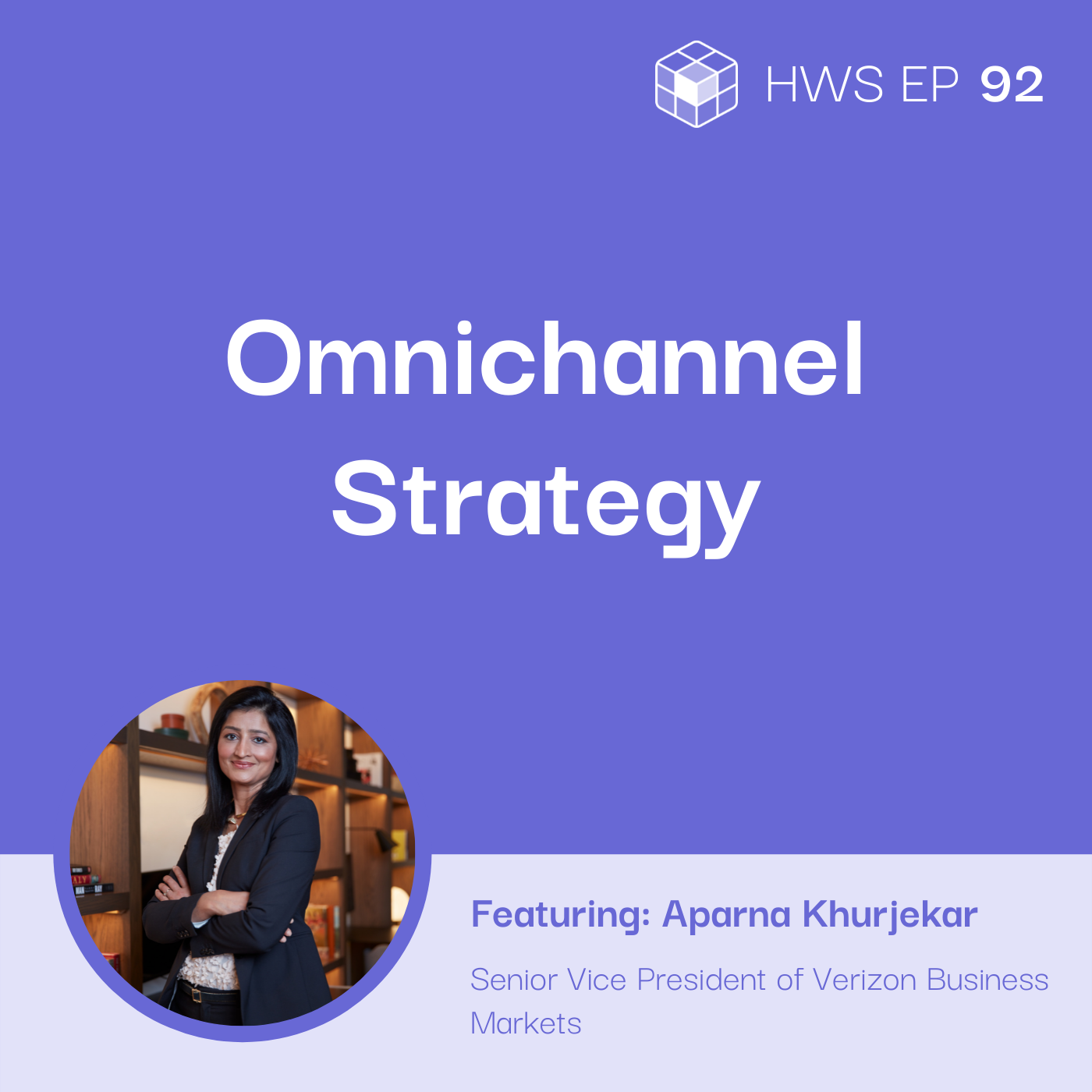Listen on:
Table of Contents:
Problem: How can small and medium businesses create an omnichannel strategy to help them bounce back after the pandemic?
There are almost 32 million small and medium businesses in the U.S. and what’s even more surprising is that these SMBs comprise almost 99% of all the businesses in the market. Here’s another mind-boggling fact, 64% of all the hiring happens in this sector. And Covid-19 changed the way these companies do business — from connecting with their supply teams, the collaboration between employees, and ultimately providing customer support. They’re rethinking new ways to connect with their customers and what they bring as their unique selling propositions (U.S.P.) The opportunity came in the form of having multiple channels to connect with them. With this in mind, how can small and medium businesses create an omnichannel strategy to help them bounce back after the pandemic?
What Covid-19 did is had a lot of these businesses rethink the way they should be connecting with individuals, connecting with businesses, connecting with their partners, connecting with the consumers. And why that happened is because consumers, who took about a decade to get to a certain lift in e-commerce, doubled their use of digital. They went in and said, I’m going to go after convenience. Their definition of loyalty changed from I love this brand too well. This brand is more convenient to go deal with.
Secure and Reliable Connection and Tech Stack
In the midst of the pandemic, small and medium businesses were pushed to be present for their customers at all times and to provide information and products whenever and wherever they needed them. To digitalize their business, they needed a 24/7, safe, reliable connection, and a technology stack that fit their specific needs. How can these SMBs take on their shift to digital?
Step #1: Make sure you have a secure and reliable connection
Connection is one thing, but you also need to make sure that your online store, platforms, and systems are protected from security threats such as ransomware. Having the right end-point solutions can help you achieve this. One that can help you with your mobile needs and collaborative tools. Eventually, building the right tech stack.
It all starts —and there’s no surprise here— making sure that you’ve got the right level of connectivity, a reliable connection. We know, and we’ve heard so much about the four-digit increase in security, and the push on, threats and cyber threats that folks are seeing.
Step #2: Understand the Different Levels of Collaborations Required in Your Organization
Different functions within your team collaborate and integrate. Consider that these different touchpoints need to be secured. Make sure that you consider the requirements of your team and employees who will be dealing with the customers. It’s crucial that the ones on the front lines have the tools they need. Next, you need to evaluate the different customer touchpoints, including a contact center, call waiting, and call routing.
You’ve got to think of it in two terms as businesses— when at home— even small businesses have labor, that’s all sitting at home or sitting remotely. They’ve got to be connecting to and collaborating, and then you’ve got the uber need of connecting with your customer and giving them that human touch through digital. This is where you need to use the right kinds of collaboration tools, contact center solutions, ways where they can call you.
Step # 3: Bring the store to your customer’s home
Creating an environment within a platform that mimics in-store shopping is the next step. Encourage customer interaction by giving them what they want, when they want it. Use your small size and agility to your advantage. Keep innovating as fast as you can.
We call it bringing the store to your home. You can actually seed stuff. You have the expertise of that rep that’s in the store, who can tell you the uniqueness of all of those products. The amount of innovation we’ve seen across the board, David, over the course of the last 12 to 18 months in the SMB space far outpaces what we’ve seen from the large enterprises. Because they’ve had to be agile, scrappy, and they know exactly what it is that their unique value proposition is. And how they preserve and grow that through technology is really what has been very interesting to see.
Step #4: Innovate and Anticipate the Hybrid Experience
People are starting to brave going out more, which is gradually increasing traffic at some physical stores. However, it is a hybrid experience. Online booking allows some customers to arrive when foot traffic is not heavy or at a time that suits them. Consider ways to integrate appointment setting and contactless payments.
How do you connect with the customer and make sure that you are keeping the right kinds of relationships have become vital? And businesses that are opting to do that very, very keenly, and intentionally as well. So, a lot has happened in pure retail terms in terms of innovation and tech stack adoption. In fact, what’s happened has been at a pace, which is just unfathomable, probably even a year, or a year, and a half ago. And it’s been very interesting
Step # 5:Leverage Cloud M.E.C.
M.E.C. or multi-access edge computing is also frequently used by applications that require location tracking or augmented reality (AR) in industries like retail. More importantly, retailers can look forward to what applications they can implement to improve the customer experience through connectivity. Businesses can use augmented reality solutions to engage customers better by showing them how a product can be used, what reviews there are on a particular item, or even what other products would complement their purchase.
One of the things that, technologies like 5G has done is it’s literally democratized the availability of the latest and greatest technology, made it accessible to everybody. And we really are encouraging our mid-sized small businesses to start thinking about it— adapting it, testing it, learning, and in ways that even we don’t know, would have been possible.
Step # 6: Stay connected with the customer
Make sure that even after their first purchase, you’re able to maintain the relationship with the customer. Keep these things in mind:
- Make sure to be there when they want to reach you and talk to you, 24/7.
- Ensure that they have a smooth voice call experience.
- Don’t forget to make sure you have a secure and reliable contact center solution in place.
- Equally, crucial to this is having a professional representative to assist your customer and making sure they know the right answer to your customers’ questions.
I think one of the biggest needs in the small-medium space has come in terms of how do you stay connected with your customer when they cannot walk into the store? When they do not want to walk into your store? And it’s opened up huge opportunities for these businesses because not only can they do it, it’s also about the convenience of the customer. That they can also be open 24 7 if they need to. And to achieve that, you need to make sure that, one, you’ve got the right kinds of accessibility and availability to do a video or even a simple voice call. It’s gotta be clean, reliable, and what you need with it is that smart routing to make sure that you are connecting to the right individual. Making sure the call wait times are managed and supported the right way.
This interview is part of the How We Solve podcast. To hear more from industry experts who are solving everyday business problems, check us out on Spotify, Apple Podcasts, and on our website.
About the guest

Aparna Khurjekar
Is the Senior Vice President of Verizon Business Markets. She’s responsible for the company’s mid-market wireless and wireline offerings and Fios B2B. She works with a team of 3000+ sales professionals guiding their customers through their digitally transformed journeys with innovative managed solutions for total communications, connectivity, and collaboration. As businesses across all segments and industries anticipate a post-pandemic comeback, they are helping them adopt 5G and making sure small and medium and potential to create new opportunities and build new efficiencies.
How people can people reach the guest:
Website: Verizon’s Small and Medium Business Website
LinkedIn: Aparna Khurjekar
Twitter: @followaparna
Listen on:
